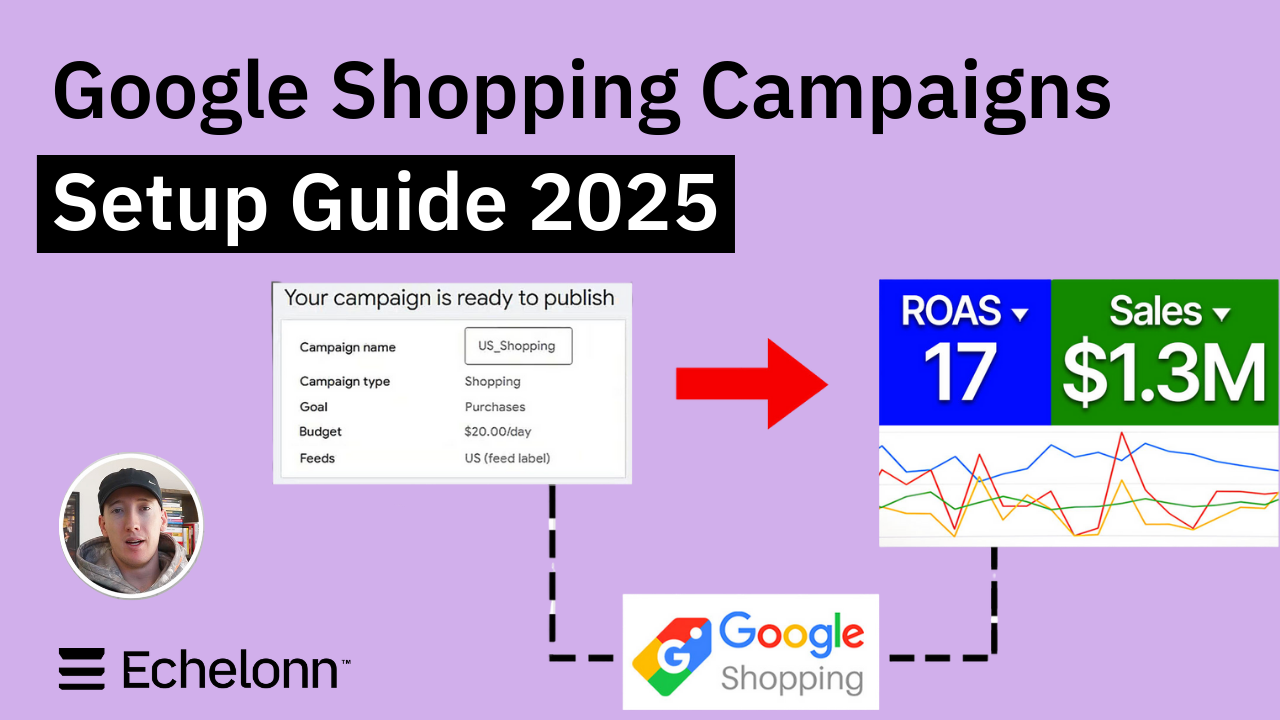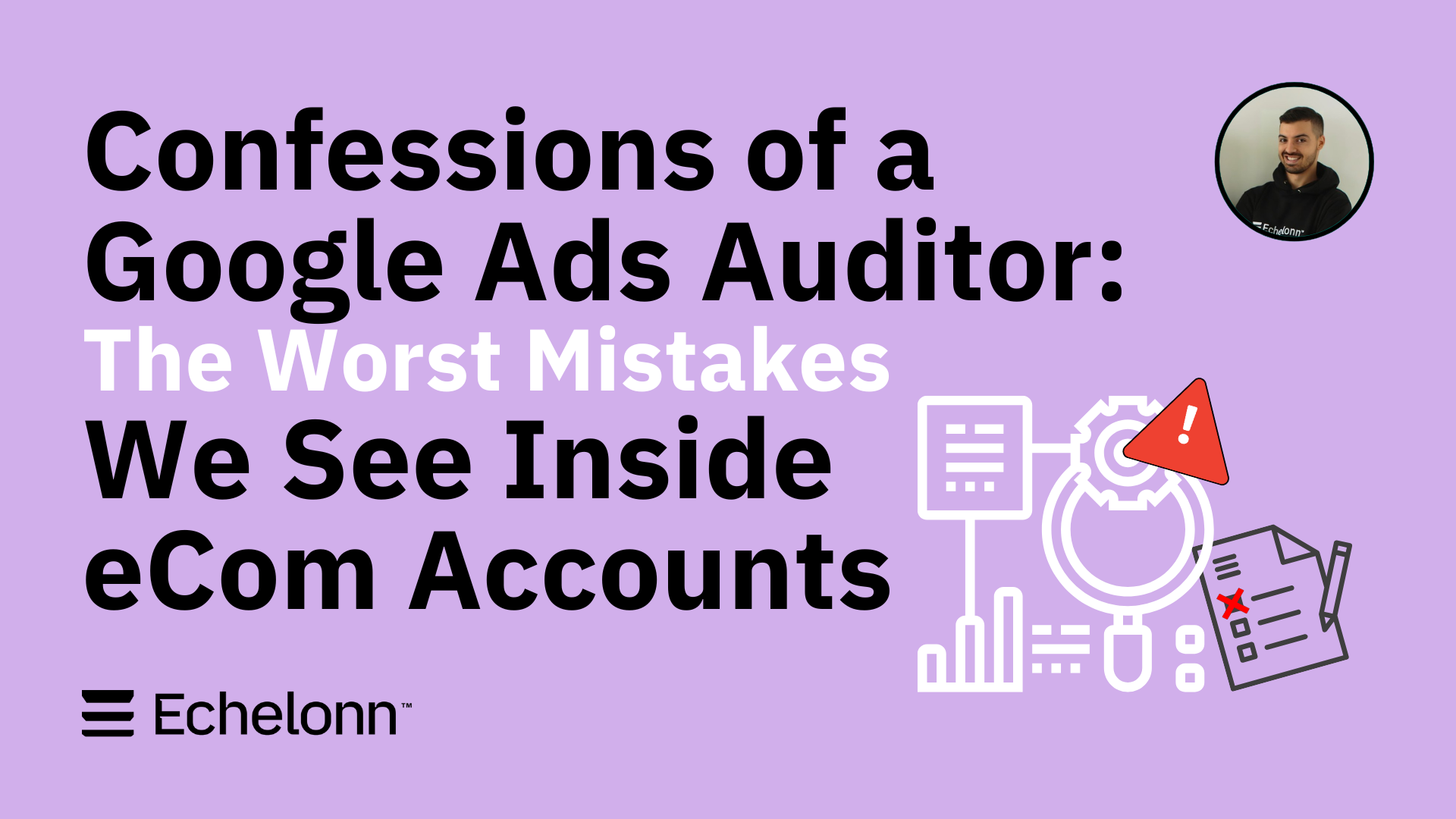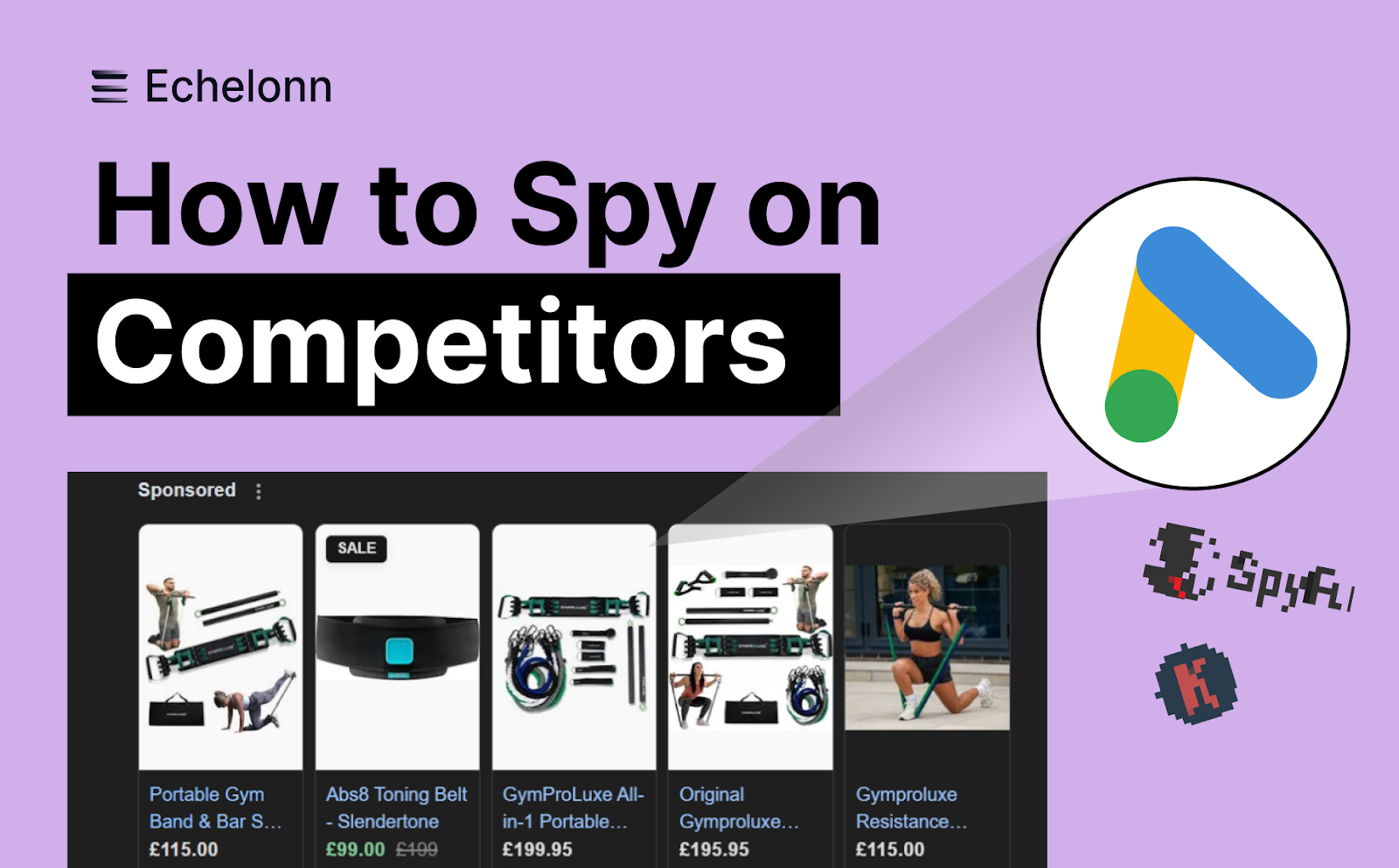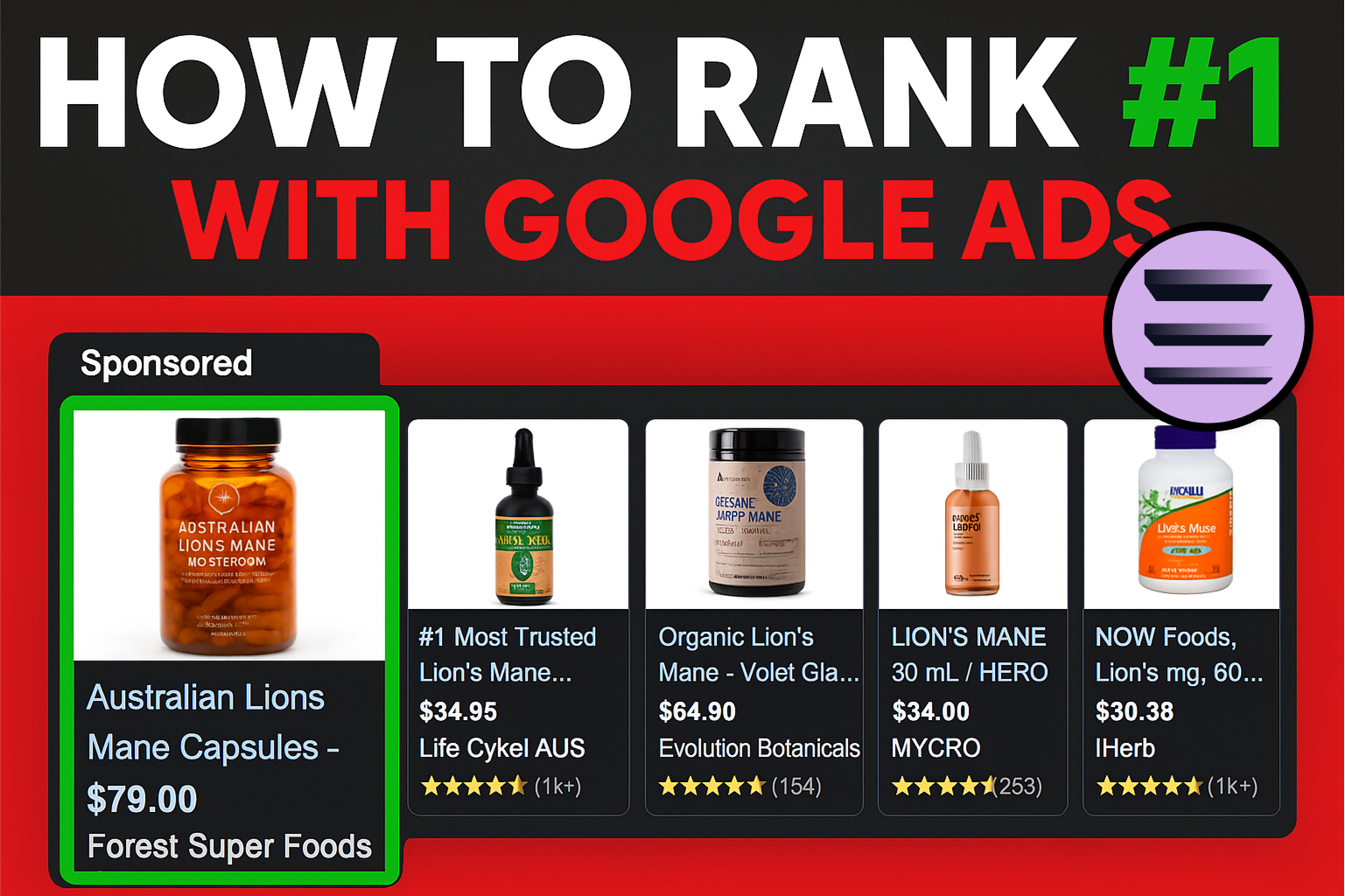Google Ads Campaign Structure: Why 95% of Brands Waste Budget on Mixed Traffic


Video Breakdown
The Critical Campaign Structure Mistake Most Brands Make
Here's what's happening in 90% of the Google ad accounts we audit (even for eCommerce brands spending 5-6 figures per month):
Your campaigns show solid performance metrics, maybe a 4 ROAS, and you feel confident about your Google Ads strategy.
But this is actually blended data.
Branded keywords deliver an average ROAS of 1299%, while non-branded keywords average just 68% ROAS, roughly 19 times higher performance for branded traffic. Branded search terms convert at 2 to 4 times higher rates than generic terms, with some studies showing branded terms achieving 4.6% conversion rates compared to less than 1.15% for generic terms.
When you blend these dramatically different performance levels, you can't see what's actually working.
Google's algorithm sees these easy brand conversions and thinks your entire campaign performs well, so it keeps bidding aggressively on expensive generic terms that actually deliver poor returns.
Here’s an example from a client we recently audited:

Branded Vs. Non-Branded are fundamentally different
Understanding this difference is crucial for any serious Google Ads optimization. Branded traffic represents users who already know your company, they're searching specifically for your products.
Generic searchers are still shopping around, comparing options, and need more convincing. New customers. This is what we call prospecting.
Here's what typically happens in blended campaigns:
- Brand searches convert at 15-25% rates
- Generic searches convert at 2-5% rates
- Blended data shows 8-12% conversion rates
How to Identify Branded vs Non-Branded Traffic
Before fixing your campaign structure, analyze your search terms data.


Export the last 60 days of search terms from Google Ads and look for five specific types of branded queries:
- Exact brand name and variations - Your company name, abbreviations, alternate spellings
- Brand plus product combinations - "Nike running shoes" or "Apple iPhone cases"
- Common misspellings - People frequently misspelled brand names
- Domain names and app names - Searches for your website URL or mobile app
- Proprietary product names - Model numbers, exclusive product lines, trademarked terms
Create a spreadsheet with columns for Search Term, Volume, Conversions, and Classification. Mark each term as either "Brand" or "Non-Brand" using this framework:
Mark as "Brand" if:
- Contains your company name in any form
- Includes proprietary product names
- References your domain or app
- Shows clear brand intent
Mark as "Non-Brand" if:
- Describes generic product categories
- Uses competitor names instead of yours
- Focuses on general problems your product solves
- Shows research intent without brand preference
Search Campaign Segmentation Strategy
Let’s start with Search campaigns because this is the easiest place to start. You have granular control over keywords and bids.
The setup is as follows: You need two separate search campaigns with different bidding strategies.
Branded Search Campaign Setup
Use Manual CPC bidding, not target impression share. Target impression share forces Google to overbid for brand terms just to capture impressions. You don't need aggressive bidding for searches containing your brand name.
Configure branded campaigns:
- Use manual CPC as your bidding strategy
- Start with conservative bids (50-70% lower than generic terms)
- Monitor impression share to ensure you're not missing brand traffic
- Focus on protecting your territory efficiently, not competing aggressively
Non-Branded Search Campaign Configuration
Use target ROAS or target CPA based on your actual non-branded performance data, not inflated blended campaign numbers.
Configure non-branded campaigns:
- Set target ROAS or target CPA using only non-branded historical data
- Allow Google's algorithm 2-3 weeks to optimize for true performance
- Monitor search terms weekly to catch brand queries slipping through
- Adjust targets based on actual profitability, not blended metrics
Negative Keyword Implementation
Create a shared negative keyword list called "Brand Negatives" and apply it to all non-branded campaigns. Include:
- Exact brand name and common variations
- Brand plus product combinations
- Common misspellings of your brand
- Domain names and app names
- Proprietary product names unique to your brand
Shopping Campaign Priority System

Shopping campaigns require a different approach using Google's priority system combined with negative keywords.
Shopping campaigns don't use keywords, so most people think you can't segment them.
They're wrong. And this technique will blow your mind.
You can't control keywords in Shopping, but you can use Google's campaign priority system combined with negative keywords to create an intelligent filter.
High-Priority Non-Branded Shopping Setup
Set your non-branded shopping campaign to high priority and add your brand terms as negative keywords. This campaign tries to serve first for every shopping query but blocks itself when searches contain your brand name.
Low-Priority Branded Shopping Configuration
Set your branded shopping campaign to low priority with no brand negatives. This campaign only serves when the high-priority campaign blocks itself on branded searches.
The system works like an intelligent traffic director:
- Generic search "wireless headphones" → High-priority campaign serves
- Branded search "Apple wireless headphones" → High priority blocks itself, low priority serves
Performance Max Campaign Optimization
Performance Max campaigns can quietly capture branded conversions while appearing profitable, interfering with your segmentation strategy.
Brand Exclusions Feature Setup
Use Google's brand exclusions feature:
- Open your Performance Max campaign settings
- Find "Brand exclusions" under "Additional settings"
- Add your brand terms
- Leave "Allow shopping ads on searches that mention excluded brands" unchecked
Monitoring and Maintenance System
Campaign segmentation requires ongoing attention. When negative keyword lists are not updated regularly, brand terms can frequently appear in non-branded campaigns, leading to inefficient spend and skewed performance data.
Weekly Reviews (first month):
- Export search terms from all campaigns
- Flag brand terms in non-branded campaigns
- Add new negatives immediately
Monthly Reviews (ongoing):
- Comprehensive search term analysis
- Budget performance assessment
- Negative keyword list updates
Budget Allocation Strategy
Based on performance data, adjusting to approximately a 20/80 branded/non-branded budget split can improve overall ROAS significantly. Obviously this would depend on your budget and brand. But this reflects that branded traffic converts easily at lower costs, while non-branded traffic needs more investment for profitable growth.
Budget monitoring essentials:
- Brand campaigns should maintain 95%+ impression share
- Non-branded campaigns can operate at 70-80% impression share
- Adjust budgets when impression share drops below targets
Implementation Roadmap
Week 1: Start with search campaign segmentation using manual CPC for branded campaigns and target ROAS/CPA for non-branded campaigns.
Week 2: Implement shopping campaign priority system with high-priority non-branded and low-priority branded campaigns.
Week 3-4: Optimize Performance Max with brand exclusions.
Month 2: Implement monitoring system and optimize budget allocation.
Transform Your Google Ads Performance
Proper branded vs non-branded segmentation fundamentally transforms how your Google Ads account performs. When you can see true performance by traffic type, you bid appropriately, allocate budget effectively, and scale the parts of your account that actually drive profitable growth.
The brands that implement this system properly transform their Google Ads performance within weeks. They finally see where their money actually makes money—and they scale accordingly.

Ready To Start Scaling Today?
Scaling Your Favorite eCommerce Brands To The Highest Levels Through Google & YouTube Ads.

.svg)
Get Smarter About How To Scale Your Brand...
Discover Insider Knowledge On How We Scale Brands From 7 Figures All The Way Up To 8-9 Figures With Google Ads.
More Articles Like This.
Find answers to common queries about our services and how we can help you.
.svg)
.png)
How to Improve Your Google Ads Conversion Rate
.png)
The Right Way to Link Shopify and Google Ads for Scalable Growth

Google Shopping Campaigns Setup Guide 2025

Confessions of a Google Ads Auditor: The Worst Mistakes We See Inside eCom Accounts

How to Spy on Competitor Google Ads: Complete 2025 Guide
%20(2).png)
7 Questions to Ask Before Hiring a Google Ads Consultant

How to Rank #1 on Google Ads: Complete Shopping & Search Guide 2025
.png)
Learning Google Ads in 2025: The Roadmap Nobody Talks About
%20(1).png)
What Makes a Google Ads Specialist Worth $10,000/Month?

Why Cheap Google Ads Consulting Costs You $180,000+ in Lost Revenue
.png)
Why 99% of Google Ads Experts Fail (& How to Find One That Won’t)
.png)
5 Google Product Feed Fixes for eCom Growth
.png)
Google Ads Campaign Structure: Why 95% of Brands Waste Budget on Mixed Traffic

In-House vs Agency Google Ads: Which Delivers Better ROI in 2025?
.png)
How to Scale Google Ads With a Small Budget | Setup and Optimization

Google Shopping Optimization: 11 Proven Tactics for Maximum ROAS
%20(3).png)
eCom Growth Strategy: How We Scaled a Supplement Brand From $1.9M to $8.6M With Google Ads
%20(4).png)
Google Merchant Center Fix: How to Improve Rankings With Accurate Shipping Times

CTR Is Misunderstood by 95% of the PPC Industry (What to Optimise for Instead)
.png)
Google Ads AI | Manual vs Automated Campaign Performance

Complete YouTube Ads Guide 2025 | 3 Formats, 5 Principles, Proven Results
%20(2).png)
eCom Growth Strategy With Google Ads in 2025
.png)
Google Marketing Live 2025: 11 Key Takeaways for Marketers
%20(1).png)
YouTube Advertising Strategy: How to Drive Results Across Every Format

Google Shopping Feed Optimisation: Tips for Better Results

How Long Does it Take for Google Ads to Work?

Search Ad Strategies to Maximize Sales with Google ads for eCommerce (2024)

2025 Google Shopping Ads: Ultimate Guide, Benchmarks, and Pricing Breakdown


.svg)

.svg)
.svg)





